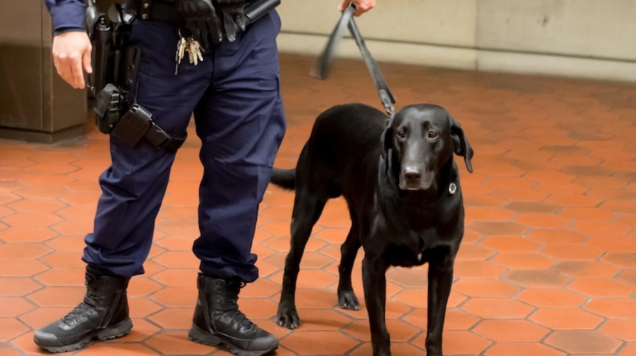At last month’s Above & Beyond festival, NSW Police refused entry to attendees after a sniffer dog had showed them interest. To be clear, they weren’t refusing entry after being found carrying drugs—they were refused entry when a dog thought they were. When ticket holders were searched, and came up clean, they were still thrown out.
This nuts decision was met with a mountain of criticism, and added fire to the ongoing discussion around the use and effectiveness of sniffer dogs. And now that criticism has been supported by new figures from South Australia Police showing that in 2016-17 sniffer dogs had a success rate of less than 15 percent. This means that of the 2,366 occasions in which dogs or another drug detection system suggested an individual had drugs, substances were only found 348 times.
Videos by VICE
Speaking to the ABC, RMIT criminologist Peta Malins said the results called the use and legality of the dogs into question: “These searches operate outside of court scrutiny because most people are searched and not found with drugs so it doesn’t get tested in court and the people found with drugs are often given cautions or diversions so that doesn’t get tested either.”
Despite these findings, and the growing evidence that sniffer dogs simply don’t work, the pressure to use them continues to grow. Just this week South Australia announced plans to introduce random drug checks and sniffer dogs in schools.
Of course, criticism of sniffer dogs isn’t fresh. It’s been bubbling away for decades. In 2001 a NSW Ombudsman’s report found that drugs were only found in a quarter of searches after a dog had flagged an individual. 13 years later, NSW Greens MP David Shoebridge obtained figures from the NSW Police Minister showing that of the 17,746 people searched by police after being indicated by dogs, 64 to 72 percent were false indications in which no drugs were found.
If that wasn’t worrying enough, not only are the dogs clearly not effective, but they’re also expensive as hell. Last year the NSW Greens released figured that reported that it cost $2K an hour, per dog, at a festival. With multiple dogs used at each event, tens of thousands of taxpayer dollars are being dropped on an aversion program with a sliver of success.
For more on drugs and your rights, check out our series High Season.
More
From VICE
-

Pawel Kacperek/Getty Images -

Screenshot: Epic Games


